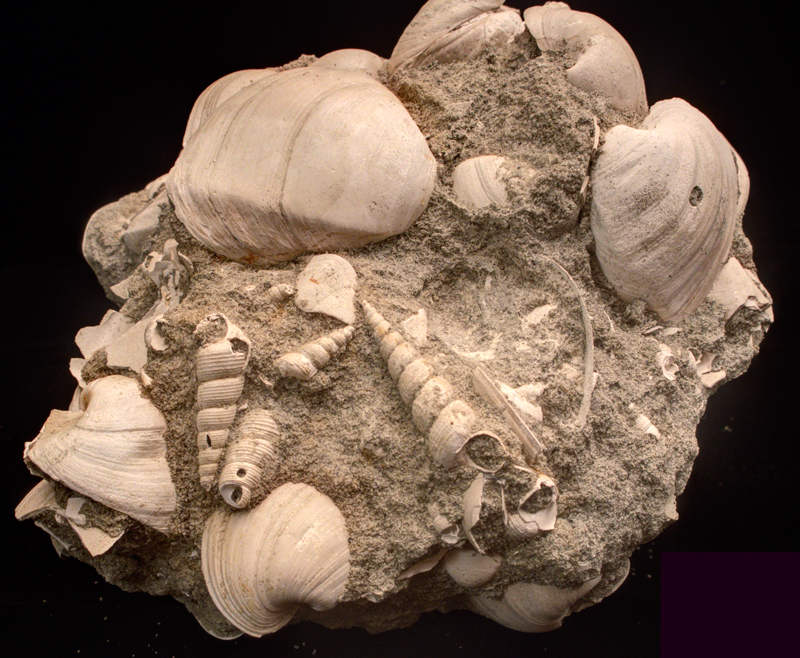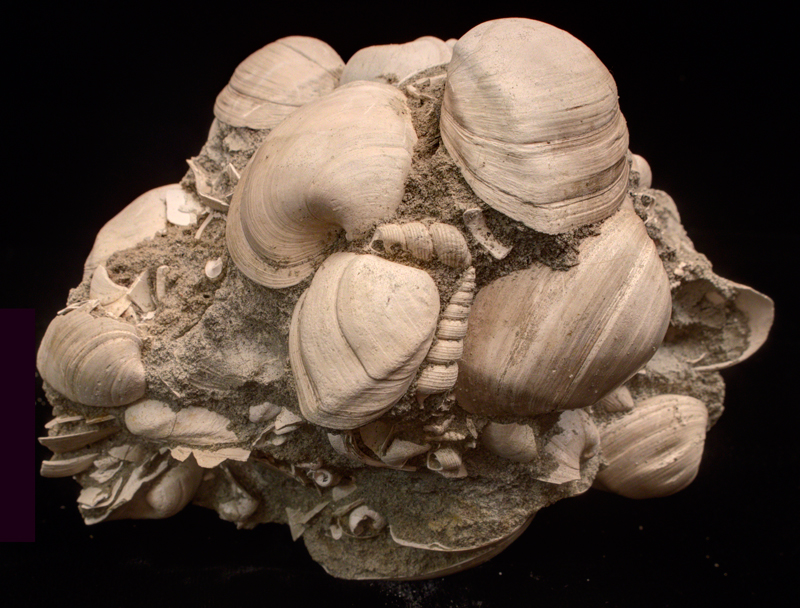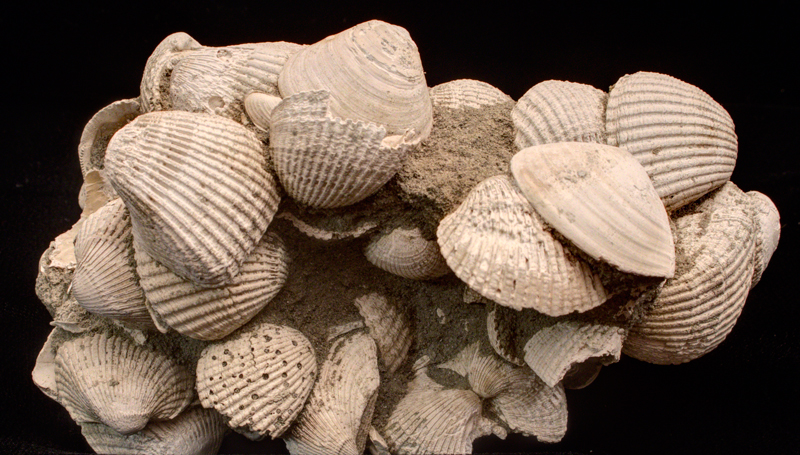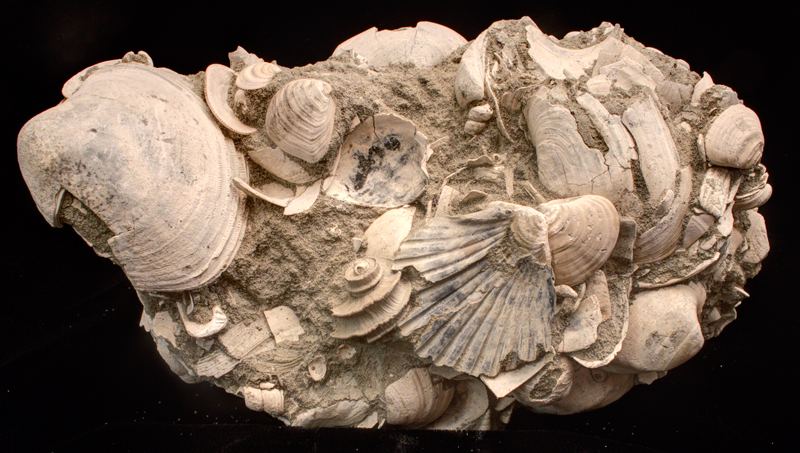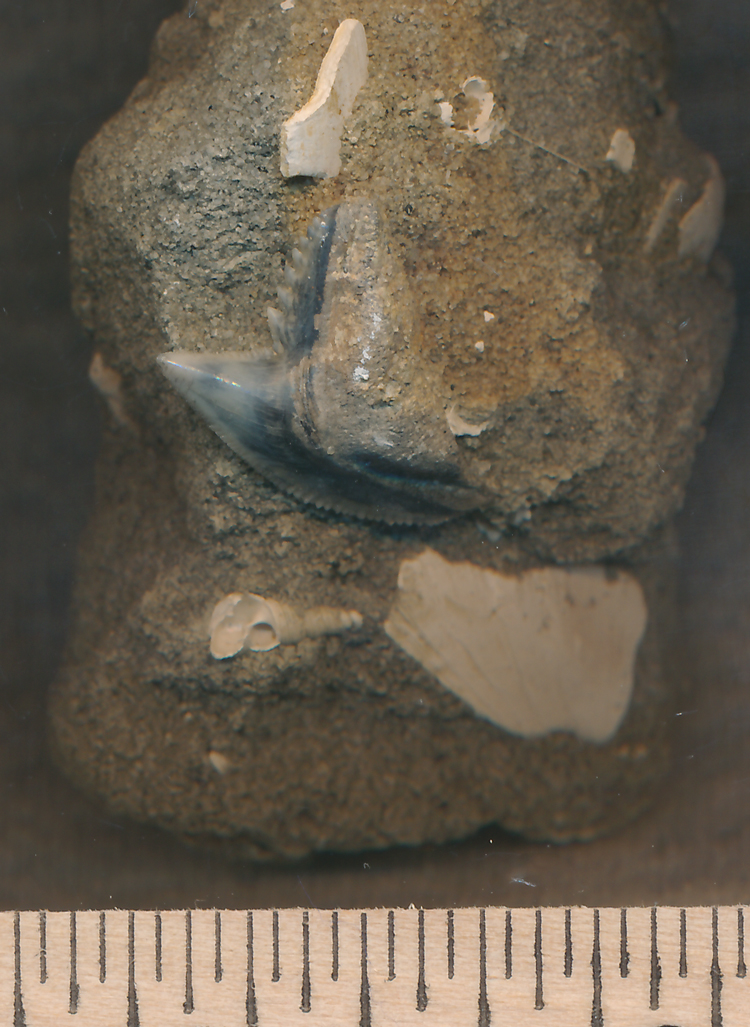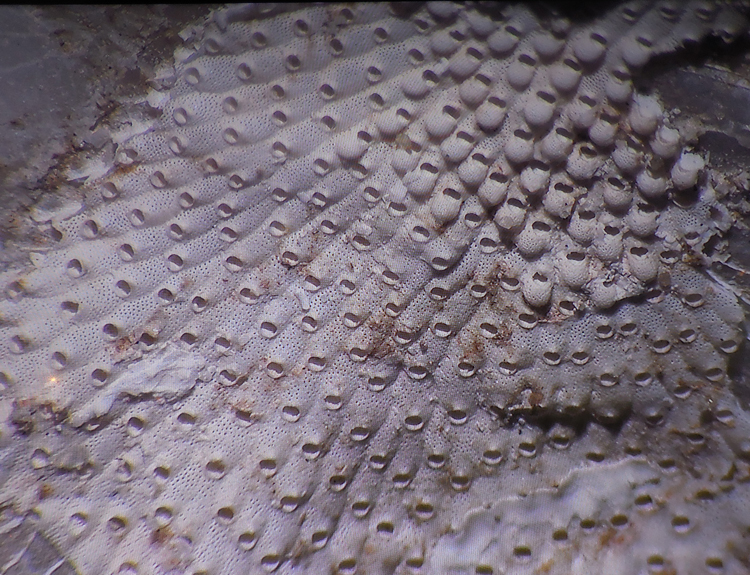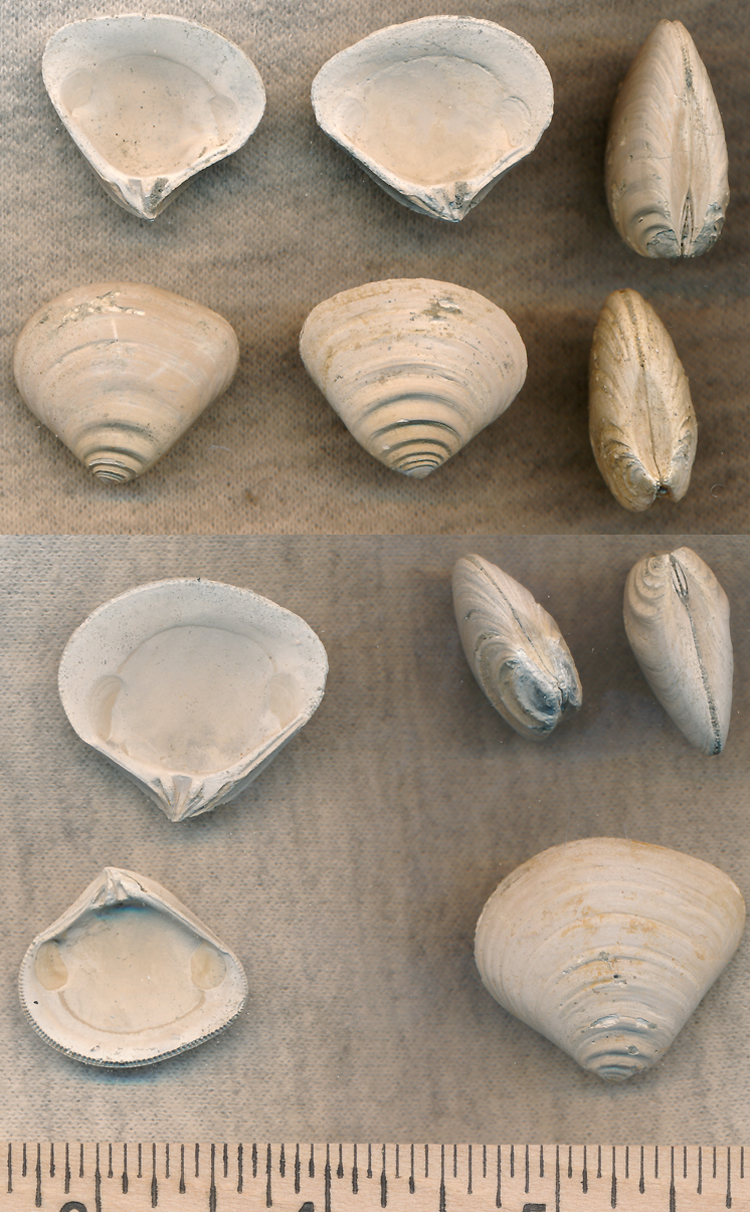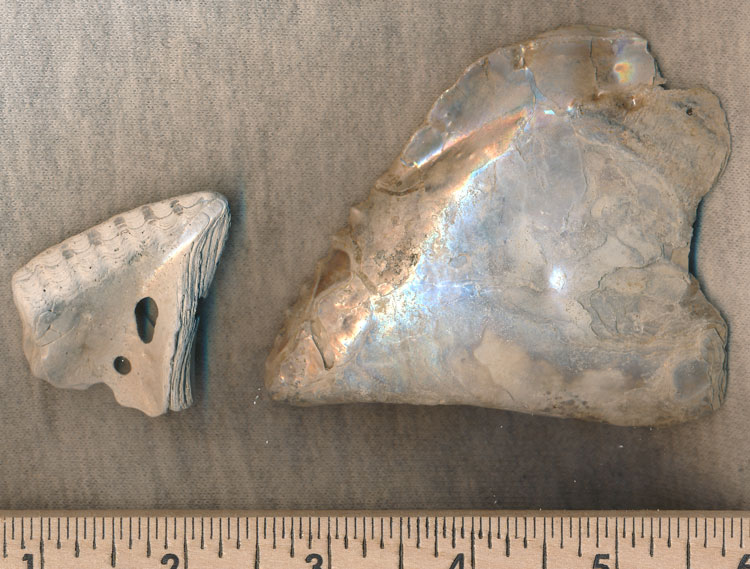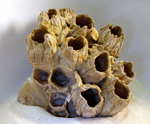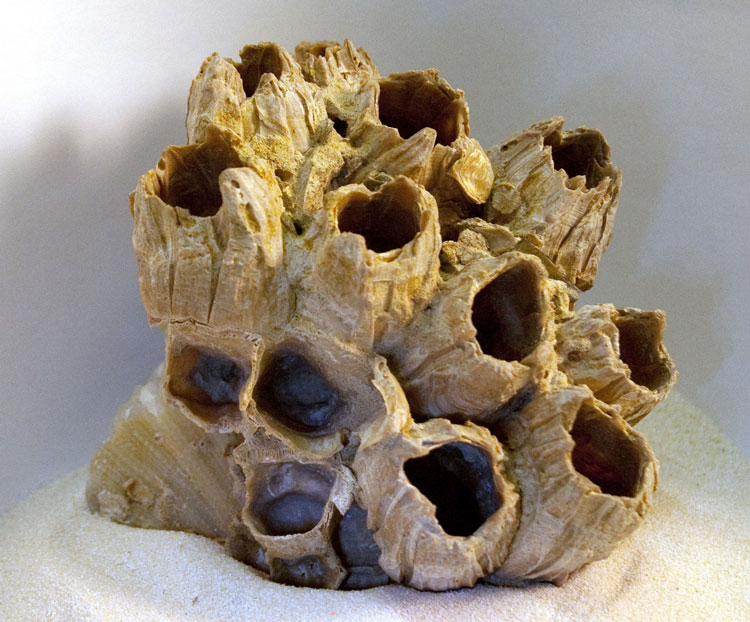Choptank Formation

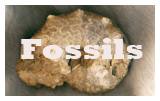

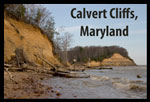
Middle Miocene, 15 to 12 million years ago. Interbedded brown to yellow very fine-grained to fine-grained sand and gray to dark bluish-green argillaceous silt; locally indurated to calcareous sandstone; prominent shell beds; thickness 0 to 50 feet. (Source: USGS On-line Spatial Data)
The first four images are death assemblages from one layer. The matrix is a gray fine sandstone.
